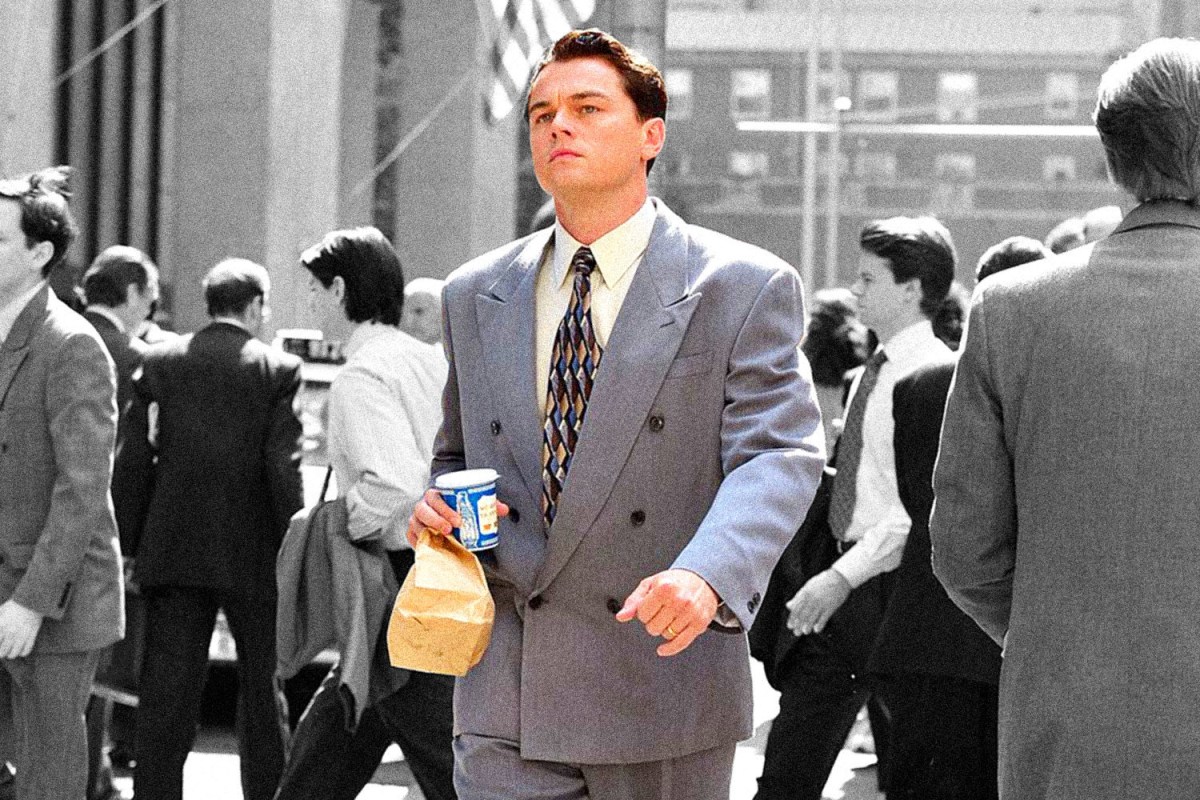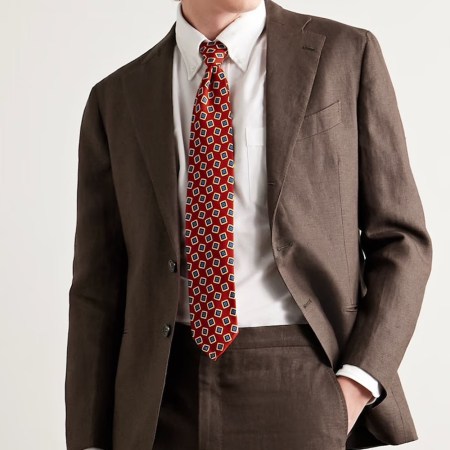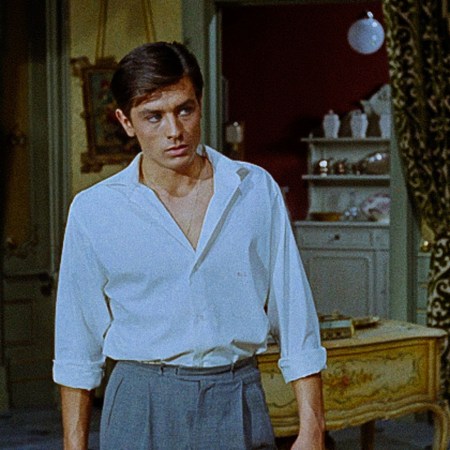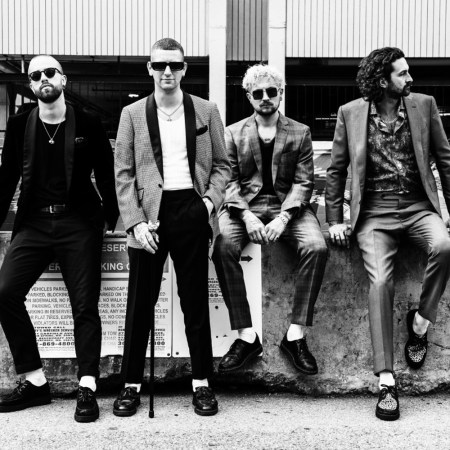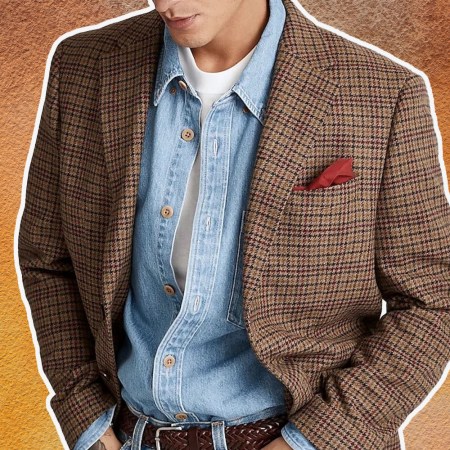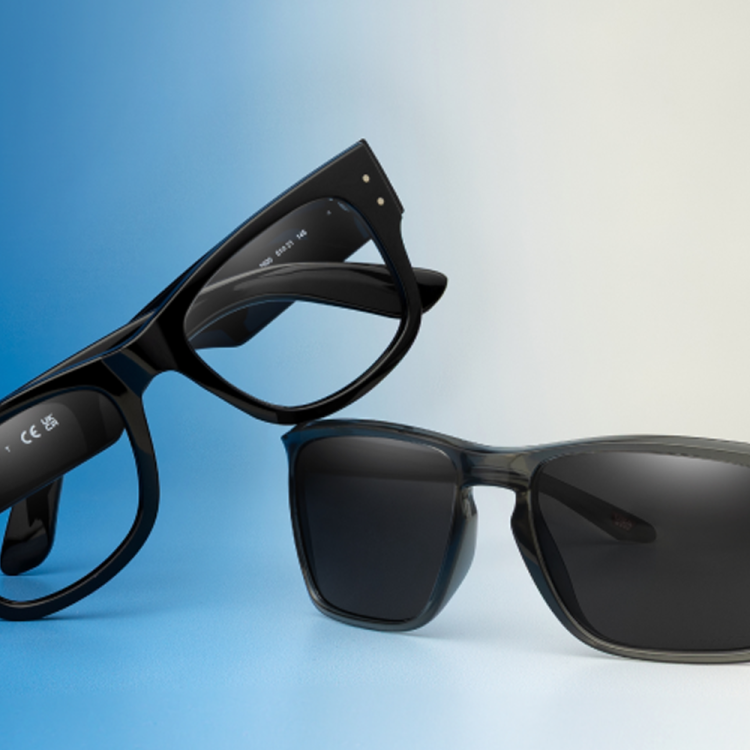Since I started interviewing costume designers for film and TV, one name has come up over and over again: Leonard Logsdail. Curious to find out more, I looked into his work, and soon learned I had seen far more Logsdail suits than I realized. Chances are you have, too.
Logsdail, 69, runs a bespoke tailoring business on Manhattan’s east side, which he commutes to every day from the Connecticut home he has lived in with his family for almost 30 years. During that time, he has worked with some of the world’s most renowned costumers, directors and actors, outfitting them for films, award shows, theater and TV shows. If you’ve seen The Wolf of Wall Street, The Irishman, The Good Shepherd, HBO’s Succession, Hello Dolly on Broadway, Hugh Jackman at the Oscars or Denzel Washington in American Gangster, you’ve seen a Logsdail suit.
The son of a London milkman, Logsdail says his family lived in a home with no indoor plumbing. “The toilet was in the backyard. We had no shower, no bath,” he tells InsideHook. He left school at 15, and unsure of what to do next, started tailoring college at his sister’s suggestion.
Trade schools were a common choice for young people in the ’60s, but Logsdail hails from a “rough and tough” part of east London where young men were more likely to be a brick layer than a tailor. Tailoring wasn’t seen as a typical man’s job because it didn’t “put muscles on the body,” he says. “You can’t get that from a needle and thimble!” Even his brother would give him a hard time, making fun of Logsdail to everyone they knew.
Regardless, Logsdail was smitten. “I walked in [to the tailoring college] and it was like it was meant for me. I could see the shapes, I could feel the cloth, and it was a love affair right from the beginning. That’s how I got into it. Just as a stopgap,” he says.
Two and a half years later, he opened his own shop after getting fired for being, as he describes it, an “arrogant young man” who thought he knew everything. Just three moths past his 21st birthday, he set up shop on Carnaby Street, a district where the tailors from Savile Row kept their workshops at the time. “I’ve been self-employed ever since,” he says.
From there, he moved to Savile Row, racking up a list of international customers from all over Europe. Soon he was traveling to see clients in places like in Holland, Luxembourg, Frankfurt, Geneva and Paris. Things changed though, he says, when the guilder collapsed against the pound and his shop lost the majority of its European business. “Then America had taken off, and I started my love affair with America,” he explains.
I ask him why he finally decided to make the move across the pond. “When I met and married an American girl,” he tells me. Logsdail met his wife on a business trip, and after living together in London for three years, they sold everything to put down roots in the U.S. They landed in New York, and Logsdail rented a board with a tailor on 57th Street soon after.
“I remember my first day. I was walking along Park Avenue going to work. I suddenly stopped dead in my tracks. It dawned on me that I didn’t have any work in progress to do. I had nothing to do when I get to work apart from start from scratch.”
Logsdail has obviously come a long way from those days. But his success story, like most of them, starts rather serendipitously. After attending a party with famed costumer Anne Roth (Midnight Cowboy, Klute, 9-5, Hair, Funny Girl, The Birdcage, The Talented Mr. Ripley — the list goes on), Roth had her then assistant — Michelle Matland, now a successful costumer in her own right (Succession, The Girl on the Train) — call Logsdail to see if he’d be interested in working on their latest project, The Good Shepherd.
“I was at work with a friend,” he says, “And on the phone Michelle went ‘We’re doing a movie called The Good Shepherd. Would you be interested in making a suit for Robert De Niro?’ I said to her, ‘Will you hang on a second.’ I said to my friend, ‘There’s a lady on the phone wants to know if I want to make a suit for Robert De Niro. What do you think I should say?’ His jaw just dropped. That’s how I started.”
I remark on how significant it must have been to have his first foray into the big leagues adjacent Robert DeNiro, with whom he has since worked on other films, like The Irishman. He says, funnily enough, it was also how he got his first film role.
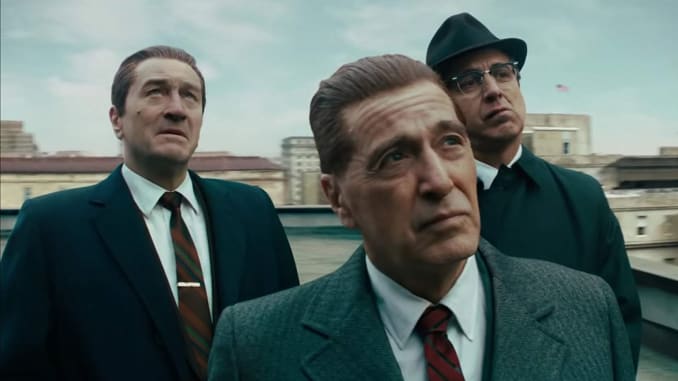
“He’s looking in the mirror at me quizzically [during a fitting]. I’m just carrying on. When I’m working, I’ll talk to anyone,” he retells. “He turns around and says, ‘Leonard, there’s a piece in this movie in a tailor shop in London. Do you want to be the tailor?’”
He says he had a small speaking role with Matt Damon in the film, and still gets residual checks in the mail from it. “The last check I got was for 45 cents, I thought, I’d better keep up with my regular job,” he jokes.
From there, Matland and Roth started recommending him to others in the industry, and assistants moving from designer to designer would as well. He says designers would ask, “Who can make suits like this?” And the answer was always the same: “We did well with Leonard, why don’t you see him?”
These days, Logsdail is in high demand in the biz, though he maintains a business serving private clients as well. He says when he gets a request for costuming, he practically “switches the phones off” to give the projects his complete concentration. “I understood from that first movie the importance of getting it right the first time, because we often are on a very short leash from the time they place the order to the time of delivery,” he says. “You really have to be on top of it. I just give them attention like they’re the only person I care about in the world.”
Every costumer I talked with sang Logsdail’s praises; longtime collaborators Powell and Peterson raved about his ability to deconstruct the vintage suits they sourced for The Irishman, freshening them with new shoulder pads and other trappings while retaining their period-specific appeal. Matland said she loves working with Logsdail because he has an “instinct” for the men he dresses; she told me how he travels the world making equestrian and hunting garments, all of which add to his natural sensibility to dress men like Succession‘s Logan Roy. “I almost never have to explain to him where to cut the seam or where the darts should go,” she says. “He’s just a perfectionist in his own right, and he makes my job so much easier.”
I was curious to hear about the process from Logsdail’s point of view. He says costumers usually come to him with what they need already in mind. They show up with photographs and other research, and together, they discuss the era of the film. “I’ve been around a lot, and by and large I can make most things. As long as I understand, I generally can produce what people want.” Then it’s on to fabrics; once those are okayed by the director, they move onto construction, which sometimes means multiple rounds of measurements and fittings. “When we did American Gangster, I must have gone out to L.A. about six times doing fittings with Denzel,” he says.
Logsdail emphasizes how much the little details matter: it’s not just the size of the lapel, it’s the angle of the lapel, the piping and width of the pocket, the size of the cuff. “When we did Wolf of Wall Street, [costumer Sandy Powell] would move the shoulder out an eighth of an inch either side as it went from one era, one decade, to the next decade.”
These little differences are what distinguishes the characters he clothes. He says while fabric choices for films tend a little heavier (a 16-ounce, as opposed to an 8, 9 or 10 for his day-to-day clients), the construction of the suits is essentially the same. “The difference is really just in the styling. The important part of any suit is to get balance,” he explains. And he says the same principles apply to making suits for his regular customers: it’s not about trend, it’s about knowing what looks good on you and what doesn’t.
“My standard saying is fashion goes out of style, but style does not go out of fashion,” he says.
Of course, I couldn’t resist asking Logsdail for some celebrity gossip. Being the English gentleman he is, he demurred saying anything negative about anyone by name, but did sing the praises of De Niro as a delight to work with, along with Hugh Jackman and Brian Cox. Michael Douglas, he says, was a “sweetheart” when the two worked together on Wall Street 2. “When we were leaving one fitting, he said, ‘Where are you going, Len?’ I told him. He said, ‘I’ll give you a ride in my car.’”
Above all, Logsdail is a family man. He says the through line in his work is that he does it all to support his family. He gives significant credit, too, to the team he works with in his shop. Being the giant he is, I was nervous to talk to Logsdail, but in the hour we spent on the phone, he shared stories about his former and current clients, his career and his personal life, all with warm and disarming ease. He says he’s seen quite a bit in his day, and credits his success in part to his poise in high-stress situations. He’s had actors with quick tempers and big egos in his studio, but when it comes to his own temperament, he’s as cool as the suits that bear his name. “Civility doesn’t cost anything,” he says.
This article appeared in an InsideHook newsletter. Sign up for free to get more on travel, wellness, style, drinking, and culture.
